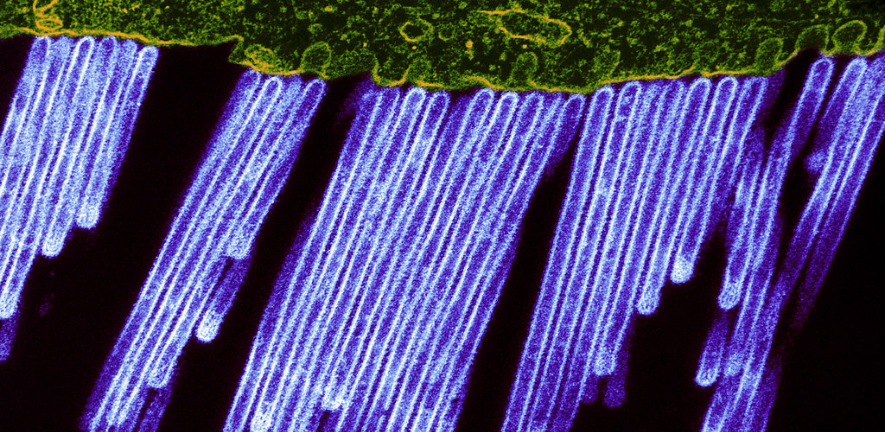
Submitted by Livia Harriman on Wed, 24/04/2024 - 14:09
As viruses reproduce, they inadvertently introduce small changes—mutations—into their genetic code.
Sometimes, these changes do nothing or are beneficial, but sometimes, where the mutation happens in a part of the genetic code critical for what the virus does, it stops the virus from functioning. We can study the patterns of mutations in viruses to learn about their biology.
Influenza A (flu) caused four pandemics in the twentieth century and has already caused one in the twenty-first century. There is currently heightened awareness of flu because bird strains of the virus have been found in farm animals, raising concern that we might have moved a step towards another pandemic.
We studied almost a million (983,552) genetic sequences from influenza A viruses—these represent many sequences acquired over time by groups worldwide. We looked for regions in the genetic code where the mutation rate is low—suggesting that the virus biology needs these regions to remain constant.
In our work, we improved our understanding of the regions of the genetic sequence that serve as recognition signals, allowing the virus to enter its genetic code into virus particles to cause onward infection. We also found regions that appear to be involved in how flu regulates its lifecycle, making suitable proteins at each stage of infection.
Understanding how different elements of a virus work throughout infection is the first step towards finding ways to stop them from working. We already have antiviral drugs against the flu, but we still need more and better drugs, and this kind of work is part of finding further candidate drug targets.
Read the study published here: Beniston E, Skittrall JP (2024) Locations and structures of influenza A virus packaging-associated signals and other functional elements via an in silico pipeline for predicting constrained features in RNA viruses. PLoS Comput Biol 20(4): e1012009. https://doi.org/10.1371/journal.pcbi.1012009
Dr Jordan Skittrall
Jordan is a clinical academic. His research interests lie at the interface between mathematics and molecular virology. He work to develop and apply novel signal processing algorithms to viral genetic data, aiming to discover previously unrecognised regions of structural and/or functional importance in viruses.
This allows us to understand the life cycle of these viruses better and focus on how we can disrupt them and avoid, attenuate, or cure disease. As with many virologists, he has recently spent some time working on SARS-CoV-2 (the virus that causes COVID-19), but he is also have interests in flaviviruses (a group of viruses including, amongst others, dengue, Zika, yellow fever, and tick-borne encephalitis viruses) and HIV.
Jordan is also interested in ensuring clinical diagnostic services can cope with additional demand during emergencies, such as pandemics, and in optimising the use of clinical diagnostics for patient care.

